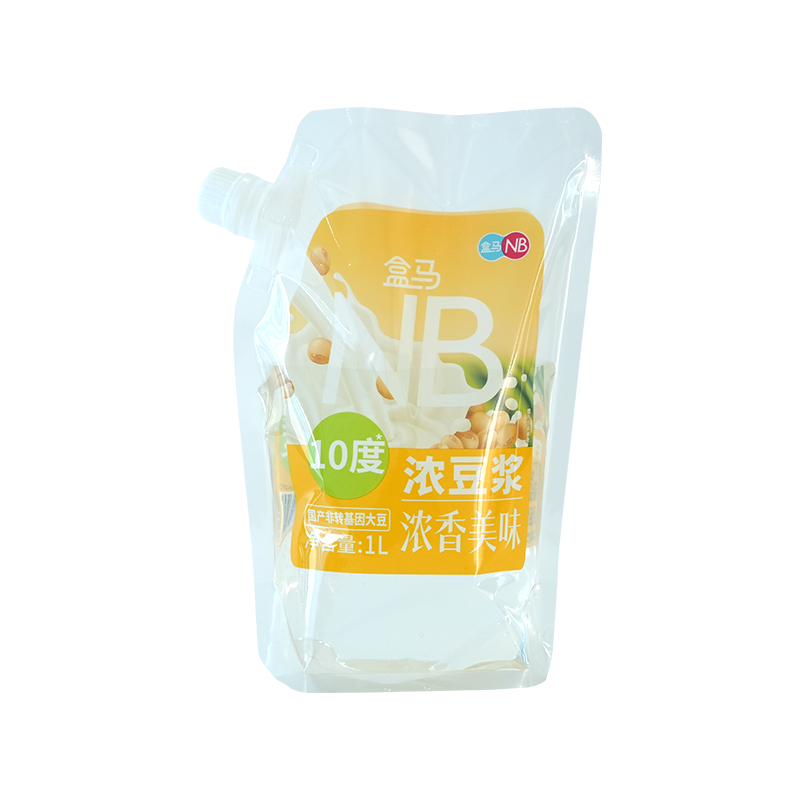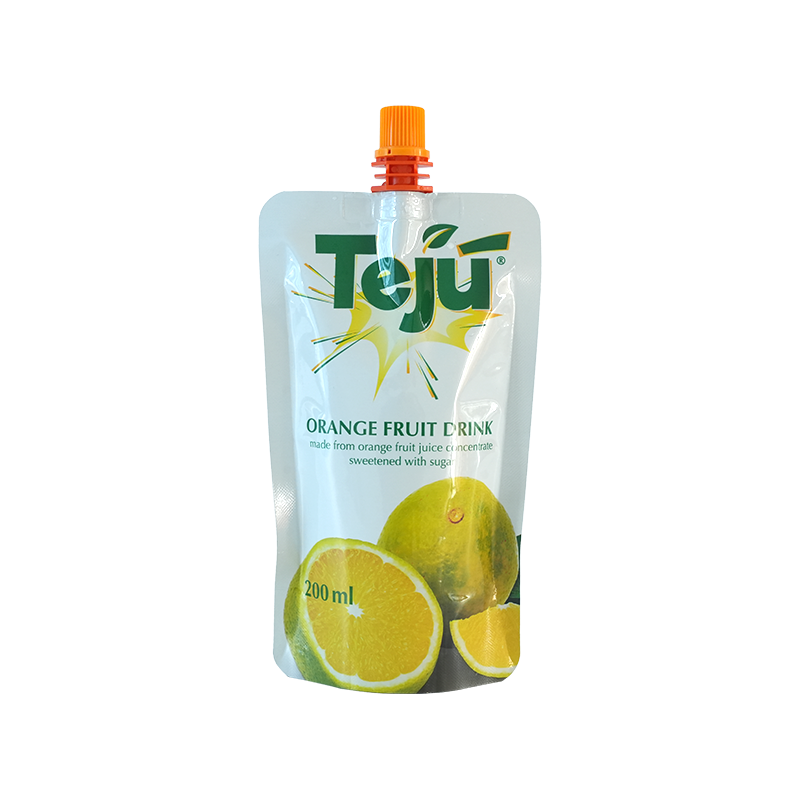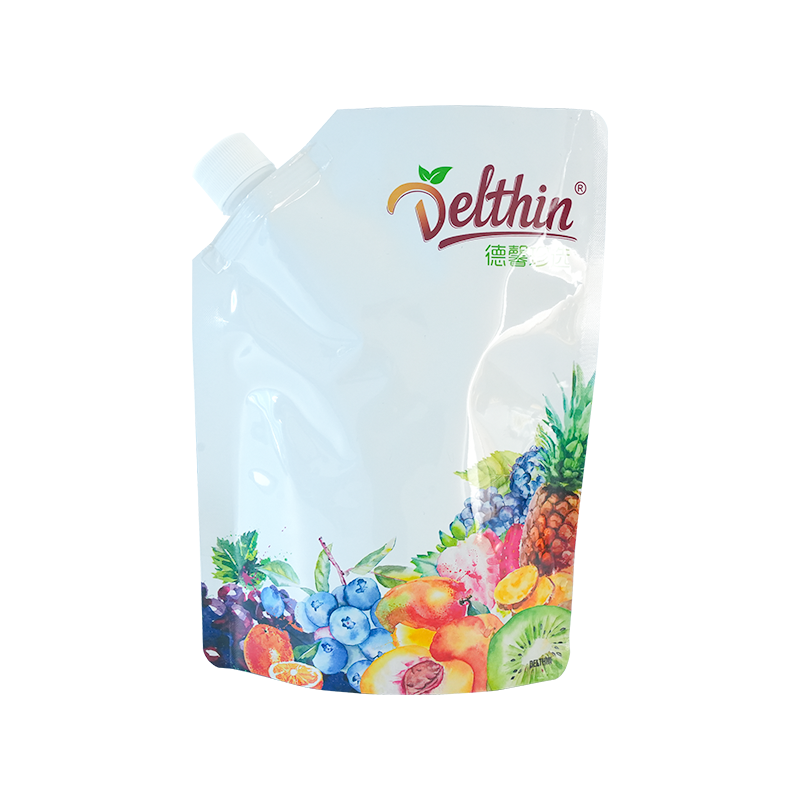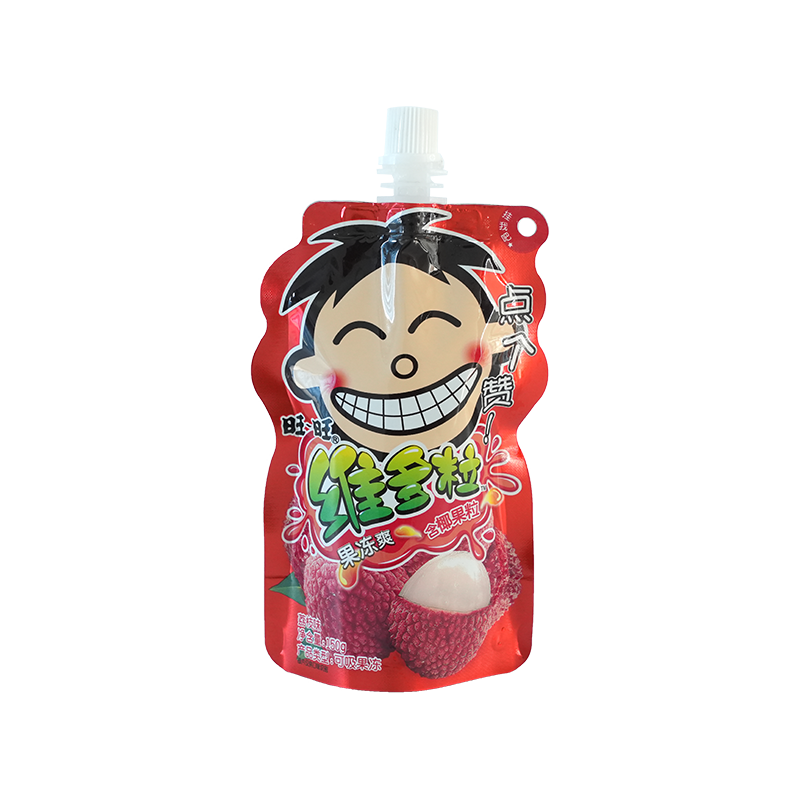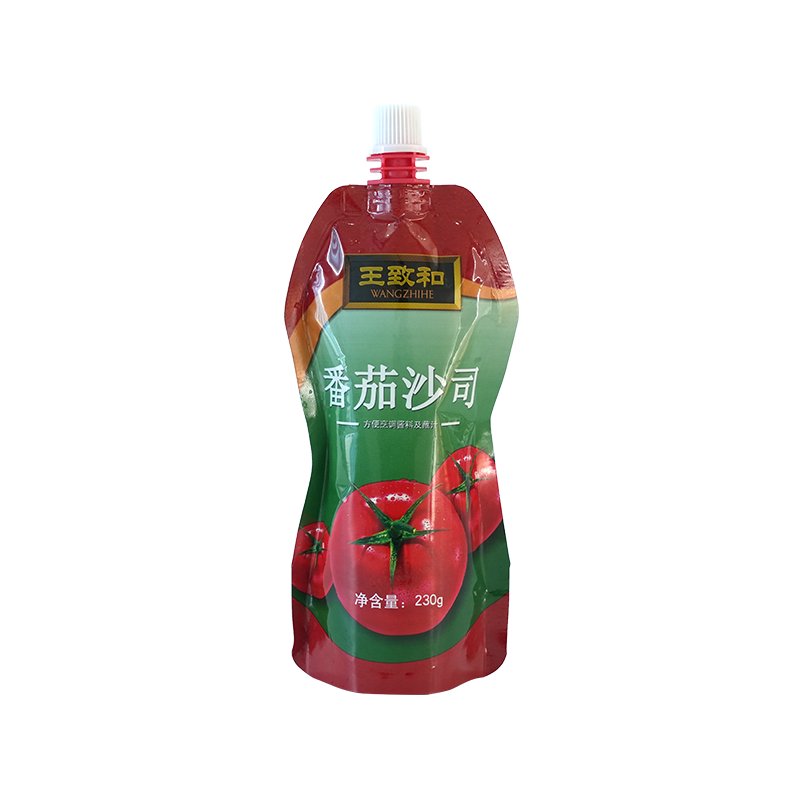The quad-seal spout pouch has emerged as a dominant force in modern packaging, offering a compelling blend of practicality, shelf presence, and supply chain efficiency. Its defining feature—a flat, stable base created by four seals—makes it a superior alternative to traditional packaging forms. However, the true performance of any quad-seal spout pouch is not determined by its shape alone, but by the sophisticated materials from which it is constructed. The selection of materials directly influences everything from product shelf life and durability to sustainability credentials and print quality.
The Foundation: Understanding Laminates in Flexible Packaging
Unlike rigid containers that often use a single type of plastic or glass, a quad-seal spout pouch is almost always constructed from a laminated film structure. A laminate is a custom-engineered material created by bonding two or more layers of different substrates together. This approach is taken because no single material possesses all the desired properties for optimal packaging performance. By combining layers, manufacturers can create a structure that is greater than the sum of its parts. The rationale behind this multi-layer strategy is to assign a specific, critical function to each layer within the composite structure. This synergy allows the pouch to meet a set of competing demands simultaneously: it must be strong yet lightweight, provide a high-quality printed surface while offering robust internal protection, and be durable enough for transit while being easy for the end-user to open and reseal.
The creation of these laminates involves advanced manufacturing techniques such as extrusion lamination or adhesive lamination. The choice of materials and the lamination process are precisely calibrated based on the product’s specific needs, including its sensitivity to oxygen and moisture, its viscosity, its weight, and the required shelf life. Consequently, the question of material options for a quad-seal spout pouch is fundamentally a question of laminate engineering.
Critical Functions of Material Layers in a Quad-Seal Spout Pouch
To appreciate the composition of these laminates, it is essential to understand the distinct roles played by the different layers in a typical quad-seal spout pouch structure. Each layer is selected for its unique properties, which contribute to the overall functionality and integrity of the package.
The Outer Layer: Durability and Presentation
The outermost layer of a quad-seal spout pouch serves as the first line of defense against the external environment and is the primary canvas for branding. This layer must be tough enough to resist abrasion, scuffing, and punctures during handling, shipping, and display. It also needs to have excellent printability to accept high-quality graphics, which are crucial for shelf impact and brand communication. Furthermore, this layer can be treated or coated to provide a sealable surface for the fin seals (the side seals of the pouch), ensuring the integrity of the package’s structure. Materials commonly used for this layer include polyester (PET) and nylon (BOPA), prized for their tensile strength and superb print surface.
The Barrier Layer: Preserving Product Integrity
Arguably the most critical functional layer, the barrier layer is responsible for protecting the product from external elements that can degrade its quality. The specific type of barrier required depends entirely on the product being packaged. For oxygen-sensitive products like coffee, sauces, or certain dairy products, an high barrier to oxygen is essential to prevent oxidation and spoilage. For hygroscopic products like powders or certain snacks, a high barrier to moisture vapor is necessary to prevent clumping and loss of texture. This barrier function is often provided by ultra-thin layers of aluminum foil (AL) or metallized films, or by specialized transparent materials like ethylene vinyl alcohol (EVOH). The choice of barrier material is a primary driver of the pouch’s cost and performance.
The Sealant Layer: Integrity and User-Friendliness
The innermost layer, which comes into direct contact with the product, is the sealant layer. This layer has a dual purpose. Its primary function is to form a strong, hermetic heat seal that creates the impermeable boundaries of the pouch, including the critical quad-seal bottom. This seal must be secure enough to prevent leakage and withstand internal pressure. Secondly, this layer must be chemically compatible with the product, ensuring that no unwanted migration of materials occurs and that the product’s taste and purity are maintained. It must also provide an easy-initiation tear for some applications, allowing consumers to open the pouch without difficulty. Common sealant materials include various polyethylene (PE) and polypropylene (PP) blends, chosen for their low sealing temperature and robustness.
Common Material Combinations and Their Properties
The combination of the layers described above results in specific laminate structures. Each combination offers a distinct balance of properties, cost, and performance, making it suitable for different product categories. The following table outlines some of the most prevalent material structures used in quad-seal spout pouch manufacturing.
| Material Structure | Key Properties | Ideal Applications | Considerations |
|---|---|---|---|
| PET/PE | Good moisture barrier, cost-effective, clear transparency, good seal integrity. | Dry foods, powders, certain non-food items like detergents or hardware. | Limited oxygen barrier; not suitable for oxygen-sensitive products. |
| PET/AL/PE | Excellent barrier to oxygen, moisture, and light; high strength, long shelf life. | Liquid foods (sauces, dressings, oils), coffee, pharmaceuticals, sensitive nutritional products. | Opaque, not microwaveable, generally higher cost. |
| PET/MET-PET/PE | Very good oxygen and moisture barrier, transparent (allows product visibility), metallic aesthetic. | Snacks, coffee, liquid beverages, products where a “premium” look is desired. | Barrier is slightly less absolute than aluminum foil. |
| NY/PE | Strong puncture and abrasion resistance, good clarity, durable. | Products with sharp edges, pet food, heavy or viscous liquids. | Moderate oxygen and moisture barrier without additional layers. |
| NY/EVOH/PE | Excellent transparent oxygen barrier, strong and puncture-resistant, retortable. | Oxygen-sensitive products requiring sterilization (retort), such as ready-to-eat meals, pet food, certain meats and sauces. | EVOH’s barrier properties can diminish in high-humidity environments. |
| PP/PP/PP | All-polypropylene structure, recyclable in some polyolefin streams, good chemical resistance. | A range of products where sustainability and recyclability are key marketing points. | Barrier properties are generally lower than foil or metallized structures. |
Detailed Analysis of Material Structures
Polyester/Polyethylene (PET/PE)
This is a versatile and widely used laminate for a quad-seal spout pouch. The polyester (PET) outer layer provides excellent mechanical strength, a brilliant printing surface, and good resistance to oils and greases. The polyethylene (PE) inner layer offers a reliable heat seal and an effective moisture barrier. This structure is a go-to choice for dry goods packaging and many non-food applications where a strong, clear, and cost-effective package is required. However, its relatively high oxygen transmission rate makes it unsuitable for products that are highly sensitive to oxidation.
Polyester/Aluminum Foil/Polyethylene (PET/AL/PE)
This classic laminate is synonymous with high-performance barrier packaging. The inclusion of a thin layer of aluminum foil (AL) transforms the pouch into an nearly impenetrable fortress against oxygen, moisture, and light. This makes it the gold standard for products demanding an extended shelf life, such as liquid food packaging for sauces, juices, and condiments, as well as for sensitive products like coffee and vitamins. The foil layer also provides a deadfold characteristic, meaning the pouch stays folded after being crumpled. The primary trade-offs are the lack of transparency and a higher material cost compared to all-plastic structures.
Polyester/Metallized Polyester/Polyethylene (PET/MET-PET/PE)
This structure offers a compelling alternative to foil laminates. Here, a layer of polyester is coated with a microscopic layer of vaporized aluminum in a vacuum chamber. This metallization process creates a very high barrier to oxygen and moisture, while still allowing the pouch to be transparent if desired. The metallized layer also provides a shiny, premium aesthetic that is popular for many consumer goods. It is an excellent choice for coffee packaging, snack packaging, and various beverages. While its barrier properties are exceptionally high, they are not as absolute as those provided by a continuous foil layer, which may be a consideration for products with an extremely long shelf life requirement.
Nylon/Polyethylene (NY/PE) and Nylon/EVOH/Polyethylene (NY/EVOH/PE)
Nylon (or BOPA) is prized for its exceptional toughness, puncture resistance, and durability. A NY/PE structure is ideal for a quad-seal spout pouch containing products with sharp or abrasive elements, such as frozen vegetables, pet food kibble, or hardware items. When an exceptional oxygen barrier is also required, a barrier resin like ethylene vinyl alcohol (EVOH) is incorporated into the middle of the structure, creating a NY/EVOH/PE laminate. This combination is particularly important for retort pouches, which are sterilized in an autoclave after filling. The nylon provides the strength to withstand the retort process, while the EVOH provides the oxygen barrier needed for long-term ambient storage of sterilized products like ready meals and stews.
The Role of the Spout in Material Compatibility
A discussion on the materials of a quad-seal spout pouch would be incomplete without addressing the spout itself. The spout is a separate component, typically injection-molded from a plastic resin, that is integrated into the pouch during the manufacturing process. The choice of spout material is critical for ensuring both functionality and compatibility.
The most common spout materials are high-density polyethylene (HDPE) and polypropylene (PP). These materials are chosen for their rigidity, chemical resistance, and ability to form a strong heat seal with the inner sealant layer of the pouch laminate. The selection between HDPE and PP is often based on the product’s characteristics; for instance, PP generally offers better resistance to essential oils and certain chemicals, making it suitable for products with strong flavors or aromas. The spout cap, which often includes a tamper-evident band and a resealing mechanism, must also be made from a compatible material to ensure a leak-proof closure and maintain the pouch’s barrier properties after initial opening. The integration point between the spout and the pouch film is a critical area of design, requiring precise engineering to prevent delamination or leakage, thereby ensuring the durability of the pouch is maintained throughout its lifecycle.
Advanced and Emerging Material Trends
The landscape of materials for quad-seal spout pouch packaging is not static. It is continuously evolving in response to market demands, particularly the powerful global push towards sustainability and enhanced functionality.
One of the most significant trends is the development of mono-material pouches. Traditional laminates, which combine different types of plastics (and sometimes foil), are notoriously difficult to recycle. In response, the industry is innovating structures where all layers are based on a single type of polymer, such as all-polypropylene (PP) or all-polyethylene (PE). These mono-material constructs are designed to be compatible with existing recycling streams, addressing a major concern for brands and consumers focused on sustainable packaging. While their barrier properties may currently lag behind those of multi-material laminates, advancements in coating technologies and material science are rapidly closing the performance gap.
Another emerging trend involves the use of high-barrier, recyclable polymers and new bio-based materials. There is growing interest in using these advanced resins as either sealant layers or as part of mono-material structures to enhance environmental credentials without sacrificing protection. Furthermore, the integration of post-consumer recycled (PCR) content into one or more layers of the pouch laminate is becoming more prevalent. This directly supports a circular economy model by reusing plastic materials. Brands exploring these options must carefully balance the percentage of PCR content with the necessary mechanical and barrier properties required for their product.
Selecting the Right Material: A Guide for Buyers
For a buyer or wholesaler, navigating this complex material landscape requires a systematic approach. The selection of the appropriate quad-seal spout pouch material is a strategic decision that should be based on a clear and detailed understanding of the product’s needs. A methodical evaluation will ensure optimal performance, cost-efficiency, and customer satisfaction.
The first and most critical step is to conduct a thorough product compatibility analysis. This involves defining the product’s specific sensitivities: Is it sensitive to oxygen, leading to rancidity or flavor loss? Is it sensitive to moisture, leading to caking or softening? Is it sensitive to light, which can degrade colors or vitamins? The answers to these questions will directly determine the level and type of barrier protection required. Furthermore, the product’s physical characteristics—its viscosity, acidity (pH), and presence of oils or sharp particulates—will influence the choice of sealant layer and the overall durability of the pouch structure.
Beyond product protection, several other factors must be weighed. The required shelf life is a primary driver; a product needing 18 months of ambient stability will require a far more robust barrier (like AL or EVOH) than a product with a 3-month shelf life. Machinability is another crucial consideration; the chosen laminate must run efficiently on high-speed filling equipment, with consistent sealing performance. Sustainability goals are increasingly a top priority, pushing buyers towards mono-material, recyclable, or PCR-containing options. Finally, all these factors must be balanced against the packaging budget, as more complex barrier structures and sustainable materials often come with a higher cost. Engaging in early and open dialogue with a quad-seal spout pouch manufacturer is the most effective way to navigate these trade-offs and identify the most cost-effective and performance-oriented material solution for a specific product.

